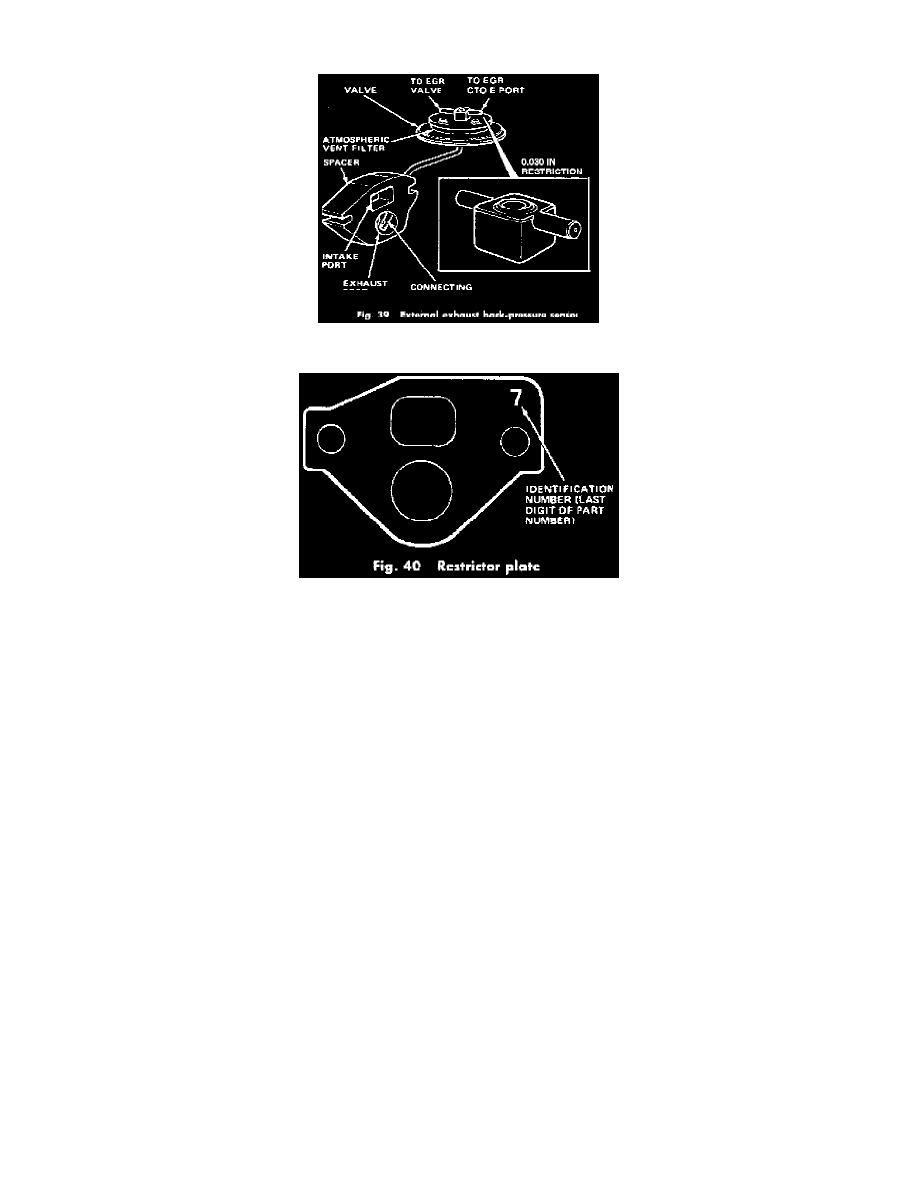Spirit L6-258 4.2L VIN C 2-bbl (1982)

Pressure Feedback Exhaust Sensor: Description and Operation
Fig 39 External Exhaust Back-Pressure Sensor
Fig 40 Restrictor Plate
The EGR system, when equipped with an external back-pressure sensor, Fig. 39, obtains a vacuum signal at the carburetor spark port and not the
EGR port. The vacuum signal passes through the EGR CTO (Coolant Temperature Override) switch (when coolant temperature exceeds 115° or
160° F) to the valve portion of the sensor where it is modulated by exhaust back-pressure.
When exhaust back-pressure is relatively high, as during acceleration and some cruising conditions, exhaust back-pressure traveling through the
metal tube overcomes spring tension on the diaphragm within the back-pressure sensor valve, and closes the valve atmospheric vent.
With the back-pressure sensor valve no longer vented to atmosphere, the vacuum signal now passes through the back-pressure sensor valve, and
the EGR valve. When vacuum signals the EGR valve, exhaust gas recirculation commences.
When exhaust back-pressure is too low to overcome diaphragm spring tension, the vacuum signal is vented to atmosphere and does not pass
through to the EGR valve. With no vacuum signal applied to the EGR valve, exhaust gas does not recirculate.
All six cylinder and some V8-304, 360 engines incorporate a steel restrictor plate, Fig. 40, under the exhaust back-pressure sensor. The restrictor
plate limits the rate of EGR flow, thereby improving driveability.
The back-pressure sensor is not serviceable and must be replaced if defective.
